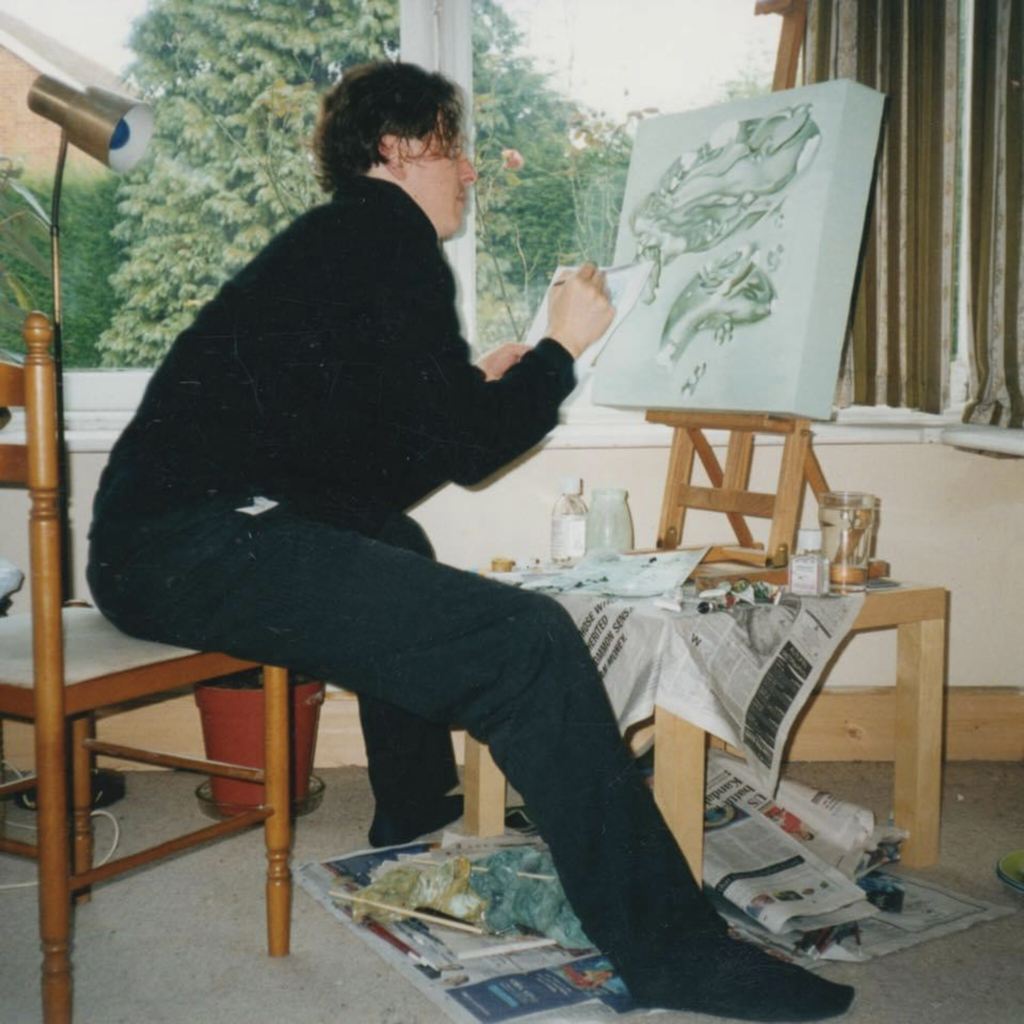Artist Statement |
As a dyslexic artist, I am very much a visual reader, also known as dominant right-hemisphere visuospatial learner, with an inclination to three-dimensional perceptibility. I rejected education as a young person due to feelings of being repeatedly stupefied at school as an undiagnosed dyslexic. In my late teens, I began drawing from imagination then later copying from life or cropped photographs. So initially I was self-taught but driven. I acquired techniques through years of diligent photography, painting and drawing practice and eventually ventured into other means of conveyance such as the moving image, digital rendering, and three-dimensional expression as well as painting on a large-scale canvas. I have developed a genre of work of light in and on water particularly turbulent water. By the time I was taking my Bachelor’s degree, I was acutely aware of my interest in spirituality, inspired by geometry of architecture in particular cathedrals.
I have now begun to question introspectively the process from inception of an idea to the execution of the work and an affinity with the sublime, also how and why I am inclined to this area and its relativity from initial conceptualisation to realisation. I often found myself reflexively thinking about the meaning of my work and the process of making it. And like the turbulent nature of water I often depict, I realized this process and the meanings I attached to it can be very dynamical and transient. I am interested in the way light on and in water morphs and warps reflections and refractions. Water is another dimension thought by the Celts to be “the gateway to the other world”(Rafety, 2001). Water is also a metaphor for transcendence and purification. Thus, there are clear spiritual connotations with water. For example, I captured a descending raindrop in slow motion through a digital camera. I then edited the footage by zeroing in on the raindrop in mid air. Frame by frame, I was able to discern the circular orb shape of a raindrop with a smaller circle of light in the middle, a skywards gaze. I have executed several variations of this work through the reflexive process of delaying closure. In my work, I have made use of the circle which I have since come to associate as a symbolic form of the sublime related to a sense of interrelatedness, connectedness and wholeness of matter. For instance, I have reflected on the idea of how the circular ripple effect in water that I captured in one my paintings alludes to the cause-and-effect that each individual play as a part of society. The square plane is a format I have conscientiously used in depicting my work for about a decade now. The square is symbolic of the physical. Therefore the use of these symbols—circle within a square—in my work relates to the polarities of heaven (spiritual) and earth (physical). |
Through reflection of my painting having evolved through the years onto the square format, I conceptualised a three dimensional work designing a cube of canvas. The cube comprised of six square canvas planes with a reversed inverted bevel edge, utilising magnetic tape to lock the cube together. I also engage in reflective process of the doing of my work. After designing this cube of canvass, I thought about how the work can be shown. I decided to hang it on its axis equidistant from ceiling to floor (dependent on ceiling height) or at about the average level of the gaze. I attached a pendulum weight to a thread from the lower vertex to prevent wobble. I was going to paint on it, but through constant reflection decided to leave it in its natural form. Later I realised the work would rotate on its axis. I then developed several moving images with water projected onto the rotating cube. I became aware of the cubes rotation forming a sphere, and the sphere is considered a universal form where all other shapes emerged (De Beer, 2017).
Most of the two-dimensional work I completed is of monochrome colouration since the subject matter of water has no colour being translucent and reflective/refractive. I associated green as a pigment reflective of fertility in nature, a sort of universal colour. I also use black to weigh the work down and white as essential for light. Another aspect relevant to the development of my work and part of the reflective process in the artmaking is that of curation. The work often needs to be viewed from a particular distance and angle to apprehend and appreciate conceptually. For example, a work I made in 2018 entitled Ripple Refract is executed on a five foot canvas depicting turbulence on the water’s surface. This work requires distance of at least five metres to grasp a true perspective. As a visual artist, I came to realise the importance of viewing my work from different angle in different time to gain another perspective thereby giving the work a time to breathe. References: De Beer, Wynand Abbertus. (2017). From Logos to Bios: Hellenic Philosophy and Evolutionary Biology. [Online]. Available at: https://core.ac.uk/download/pdf/43176760.pdf. [accessed 10 Jul. 2019]. Raftery, Barry (2001) Atlas of the Celts. London: George Phillip Limited. |
Education
|
Exhibitions
|
ExperienceAs freelance artist, Skye has created an estimated 300 artworks and sold over 30 pieces (with a Bishop of Westminster Cathedral s one of the buyers),. Most of his works were shown in various exhibitions across London and the UK and other countries like US and Mexico,. He collaborated with various artists, architects and designers in art projects, restored paintings for personal commissioned projects, engaged in managing business and developed his portfolio, One of his works was a graphite portrait of Deputy Prime Minister John Prescott who screen-grabbed the image and used it as his Twitter profile picture.
|
Home | Contact me

